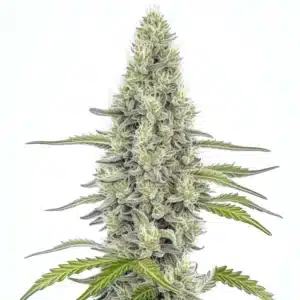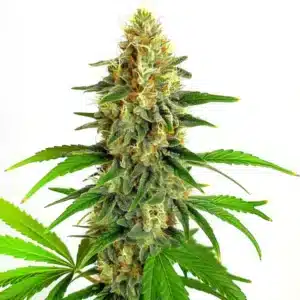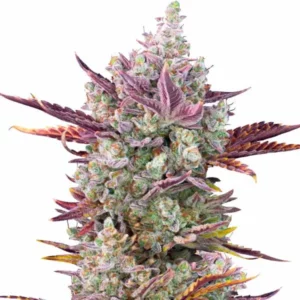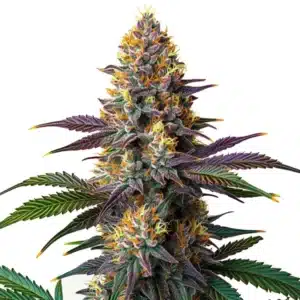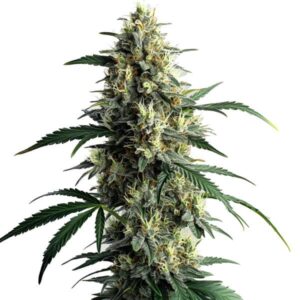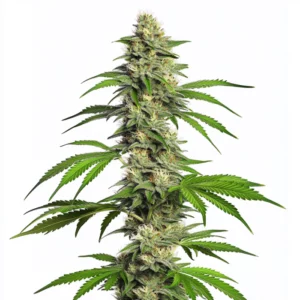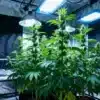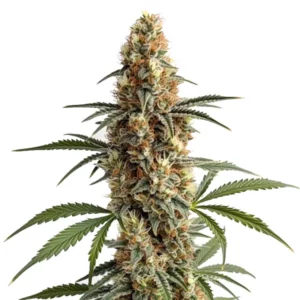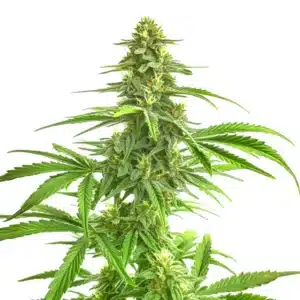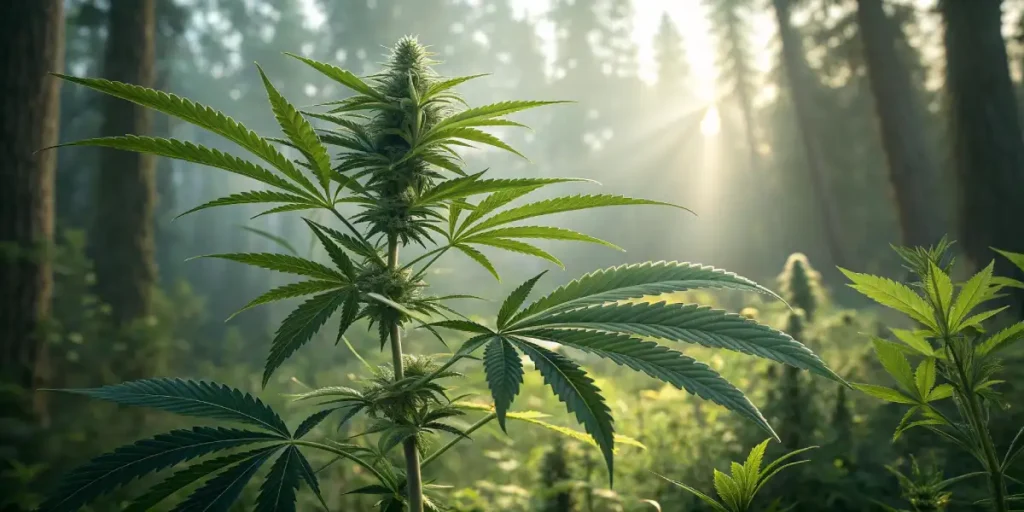
Xylem and Phloem in Cannabis
In cannabis cultivation, knowing how plants transport water and nutrients is key. Two main players in this process are the xylem and phloem in cannabis. These tissues are like highways inside the plant, each with its unique function
First, let’s talk about this crucial tissue. It is responsible for moving water and minerals from the roots up to the rest of the plant. Think of it as a straw that sucks up everything the plant needs from below. Without healthy tissue of this kind, cannabis plants can’t grow strong and tall.
Recommended Strains
Mazar
|
|
THC | 20% (Medium) |
|
|
Type | Feminized |
|
|
Yield | Low |
|
|
Phenotype | 90% Indica / 10% Sativa |
Mazar Auto
|
|
THC | 8% - 10% (Low) |
|
|
Type | Autoflowering |
|
|
Yield | Medium |
|
|
Phenotype | 65% Indica / 35% Sativa |
Phloem, on the other hand, works differently. It transports sugars and nutrients produced by photosynthesis from the leaves to other parts of the plant. This downward flow is crucial for growth and energy distribution. Both tissues, xylem and phloem in cannabis, work together to keep your plants thriving.
Xylem and Phloem Function in Cannabis Plants
The xylem and phloem function in cannabis plants is essential for their survival and productivity. These two systems ensure the efficient transport of water and nutrients, affecting overall plant health and yield. Whether you’re growing indoor or outdoor, comprehending this can help improve your harvest.
For example, the strain Bubba Kush thrives with optimal vascular function. This indica-dominant strain benefits from a robust transport system, ensuring it gets the necessary nutrients to develop its dense, resinous buds.
By recognizing the vascular function in cannabis plants, growers can adjust their cultivation practices to better support these vital systems. This might include optimizing watering schedules, ensuring adequate soil mineral content, and providing necessary nutrients at different growth stages.
Efficient vascular function can also aid in disease resistance, as healthy plants are better equipped to fend off infections. Regular monitoring and adjustments can lead to stronger plants that can withstand environmental stressors, ultimately leading to a more successful yield.
Cannabis Nutrient Transport Through Xylem and Phloem
Effective cannabis nutrient transport through and phloem is vital for achieving a lush, thriving plant. With its upward movement, it brings essential minerals from the soil to the leaves. This ensures that the plant has everything it needs for photosynthesis.
On the flip side, phloem carries the sugars produced in the leaves down to the roots and growing buds. This nutrient flow supports the plant’s energy needs, especially during flowering. Healthy phloem means your cannabis plant can sustain its growth and bud production.
When considering cannabis nutrient transport through xylem and phloem, it’s important to focus on balanced nutrition. Providing a mix of macronutrients and micronutrients supports the optimal function of these transport systems, ensuring that plants can thrive throughout their lifecycle.
Moreover, maintaining an ideal pH level in the soil or growing medium can enhance nutrient uptake through xylem and phloem in cannabis. This balance prevents nutrient lockout and ensures that all necessary elements are available for healthy plant development.
Promos & Deals
Xylem and Phloem Role in Cannabis Growth
Knowing the function of vascular tissue in cannabis growth can lead to healthier plants and bigger yields. The main job of one of these tissues is to support water uptake, which is crucial for photosynthesis and nutrient absorption. Without it, plants can wilt and suffer from nutrient deficiencies.
Phloem, however, supports growth by distributing the sugars and nutrients necessary for cell development. This role is especially important during the flowering stage when energy demands are high. A balanced function of both vascular tissues can significantly impact the overall growth and yield of your cannabis plants.
These tissues also play a role in supporting structural integrity. As one of them provides a rigid framework, it helps the plant maintain its shape and resist external pressures, like wind or heavy buds, which is critical for outdoor cultivation.
Meanwhile, maintaining a healthy phloem flow ensures that energy is efficiently distributed, promoting flowering and resin production. This is particularly crucial for strains known for their high cannabinoid content, as robust nutrient transport supports maximum potency.
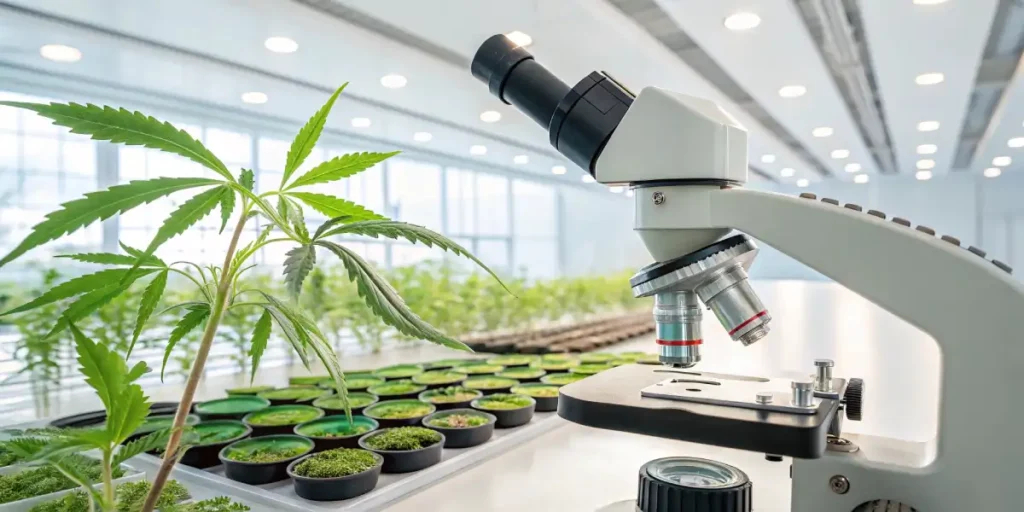
Impact of Xylem and Phloem Health on Cannabis Yield
The impact of phloem health on cannabis yield cannot be overstated. When these systems are functioning well, plants can maximize their potential. Healthy phloem ensures efficient nutrient transport, leading to robust growth and abundant flowering.
If either system is compromised, your cannabis plants may struggle. Signs of trouble include wilting, nutrient deficiencies, and stunted growth. Regular monitoring and care can help maintain the health of these vital tissues.
To maximize the impact of phloem health on cannabis yield, consistent monitoring of plant health is crucial. This includes checking for any signs of nutrient deficiencies or imbalances and adjusting feeding protocols accordingly to support optimal transport functions.
Implementing techniques such as pruning and training can also enhance the health of xylem and phloem by improving airflow and light penetration, further supporting vigorous growth and higher yields. These practices are especially beneficial for dense-growing strains.
Differences Between Xylem and Phloem in Cannabis Plant
While xylem and phloem in cannabis plants both play crucial roles, they have distinct differences. Xylem is mainly involved in water transport, moving from the roots to the leaves. It also provides structural support to the plant, helping it stand tall.
Phloem, in contrast, is responsible for transporting organic nutrients, especially sugars, throughout the plant. This movement goes from the leaves to the roots and all growing parts. Comprehending these differences can help you manage your cannabis plants’ needs more effectively.
Recognizing the differences between xylem and phloem in cannabis plants can help growers tailor their care routines. For instance, focusing on root health and water availability supports efficiency, while ensuring adequate photosynthesis boosts phloem activity.
Additionally, knowing these differences aids in diagnosing issues. If a plant shows signs of water stress, the xylem might be the problem, whereas poor sugar distribution might indicate phloem issues. Proper diagnosis can lead to more targeted and effective solutions.
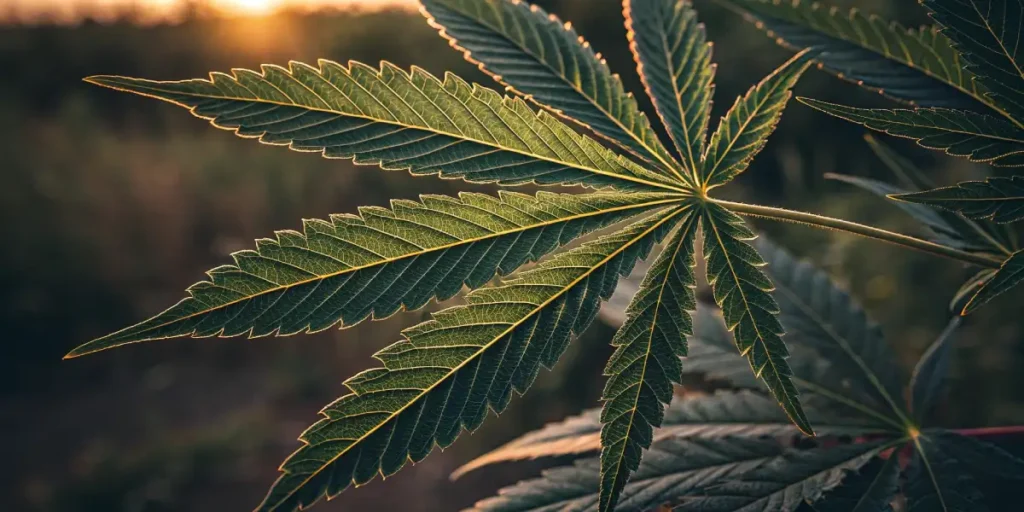
FAQs on Xylem and Phloem in Cannabis
What happens if the xylem is damaged in a cannabis plant?
If the vascular tissue is damaged, the plant may struggle to transport water and minerals. This can lead to wilting and a lack of nutrients, affecting overall growth. You might notice the plant becoming weaker or more prone to diseases as its ability to stand tall and absorb essential components diminishes.
To prevent vascular tissue damage, handle your plants gently, especially when transplanting. Ensure they are supported if growing taller strains, as physical stress can harm the vascular tissue. Regularly check for signs of damage, like bent stems or drooping leaves, and take action promptly.
Comprehending the vascular tissue and phloem function in cannabis plants can guide you in preventing damage. Employing proper staking and support methods during the vegetative stage can help prevent vascular tissue damage from physical stress as plants grow larger.
Additionally, ensuring your cannabis plants are in a stable and stress-free environment reduces the risk of vascular tissue injury. Consistent care and attention to environmental conditions will maintain plant health and promote efficient nutrient transport.
How can I improve the health of phloem in my cannabis plants?
Improving phloem health involves ensuring your plants have adequate nutrients and are not stressed. Proper fertilization and avoiding over-watering can support a healthy phloem. Monitor the nutrient levels and adjust your feeding schedule to maintain a balanced diet for your plants.
Also, consider environmental factors. Ensure your plants receive enough light and are kept in a temperature-controlled environment. Stress from extreme temperatures can affect phloem function. Healthy phloem means better nutrient distribution and healthier, more productive plants.
To further enhance the health of phloem in cannabis plants, employing regular foliar feeding can provide immediate nutrient access, supporting the phloem’s ability to transport sugars and other essential elements throughout the plant.
Maintaining optimal humidity levels is also critical, as it influences transpiration rates and overall plant stress levels. A balanced environment fosters improved phloem function, leading to vigorous growth and robust flowering.
Can environmental stress affect xylem and phloem function in cannabis?
Yes, environmental stress can significantly affect phloem function. Factors like extreme temperatures, poor soil conditions, and insufficient water can hinder their efficiency. The plant might struggle to transport water, while phloem may fail to distribute sugars properly.
To mitigate stress, maintain optimal growing conditions. Regularly check soil moisture, temperature, and light exposure. Adjust your care routine according to the plant’s life stage and environmental changes to keep xylem and phloem functioning well.
Implementing stress-reducing practices, such as using shade cloths or windbreaks, can protect plants from harsh environmental conditions, ensuring that the vascular system in cannabis plants remains healthy and functional.
Furthermore, selecting resilient strains that are better suited to your growing environment can minimize the impact of environmental stress, ensuring that the vascular system operates efficiently throughout the growing cycle.
What are some signs of phloem issues in cannabis plants?
Signs of phloem issues include poor growth, yellowing leaves, and underdeveloped buds. Sugars may not be efficiently transported, leading to energy shortages in the plant. You might also notice the plant isn’t producing as many flowers as expected.
Address phloem problems by ensuring your plants receive adequate nutrition. Check for pest infestations that could damage the phloem, such as aphids or mealybugs. Keeping your plants healthy and stress-free will support robust phloem function.
Comprehending the xylem and phloem role in cannabis growth can also aid in identifying phloem issues. Observing changes in leaf color or bud formation can provide early warning signs, allowing you to address potential problems before they affect yield.
Pruning affected areas and ensuring proper airflow can further prevent phloem-related issues, as this reduces the likelihood of pest infestations and supports overall plant health, allowing for uninterrupted nutrient transport.
Are there strains more resilient to xylem and phloem issues?
Some cannabis strains are more resilient to xylem and phloem issues due to their genetic makeup. Strains like Gelato are known for their hardiness and ability to thrive in various conditions.
When choosing a strain, consider your growing environment and experience level. Strains with strong genetic backgrounds can better withstand stressors that might impact vascular health. Properly selecting and caring for these strains can lead to successful harvests.
Incorporating strains known for their robust vascular function in cannabis plants can be beneficial for beginners, as they require less intensive care and are more forgiving of environmental fluctuations.
Additionally, researching strains that are specifically bred for improved nutrient transport and stress resistance can enhance your cultivation experience, leading to healthier plants and higher yields despite potential challenges.


